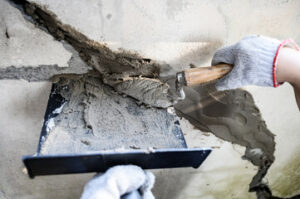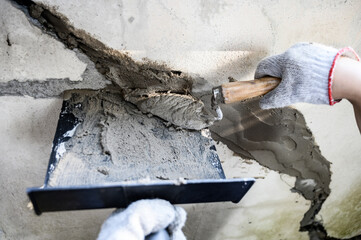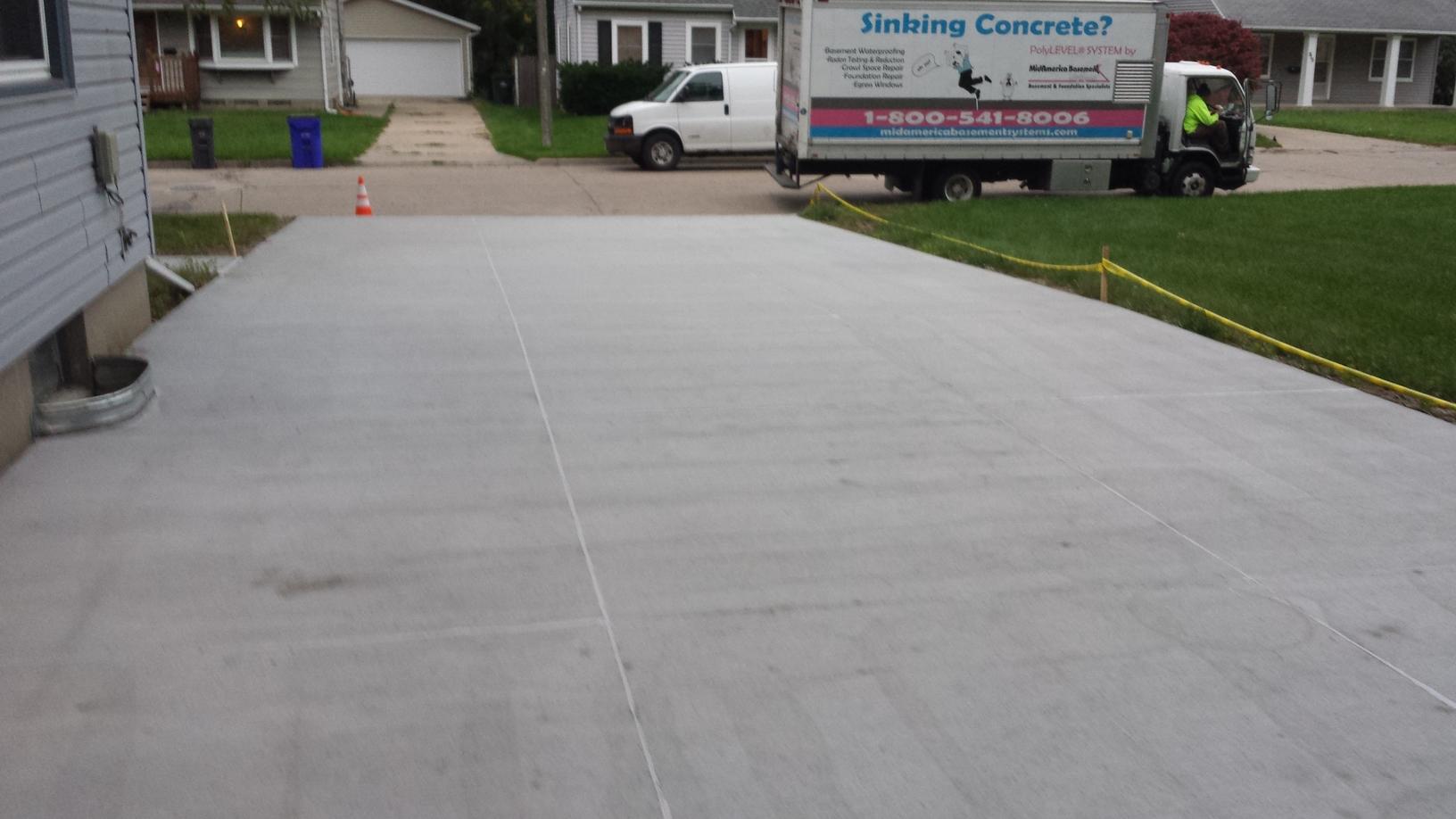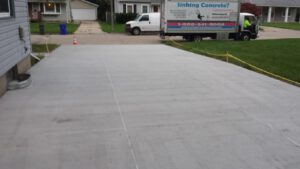The main thing to know before you apply any repair is its modulus of elasticity. You need to also know the size of the area to be repaired, the application method, and the durability of the repair. If you don’t know all of these things, you can ask the repair expert to help you choose the right concrete repair for you. After all, the right repair will help your building look great, and it will make you feel good too! To get this done, call Level Ground Excavation today.
 Modulus Of Elasticity
Modulus Of Elasticity
The strength of the repair material is determined by its modulus of elasticity or MOE. Ideally, the material should exhibit the same MOE as the original concrete to allow for uniform load transfer across the repaired area. However, the actual MOE of the repair material will vary depending on its application. For general repairs, a lower MOE means more flexibility and a higher MOE means more stiffness. To achieve a good bond, you should thoroughly prepare the repaired area before applying the repair material.
The first step in determining the strength of concrete is to understand how it reacts to stresses. The modulus of elasticity of concrete is the force applied to the material to cause a structural response. The stronger the concrete, the stronger the structural response. The next step is to calculate the stress. Fortunately, concrete has excellent properties for this type of stress. The strength of the repair material can be measured using a cyclic load.
When a repair material is applied to concrete, it must be able to withstand high shear stresses. This is possible only by assessing its bond strength against the concrete’s underlying strength. The repair material can contain polymers and other additives to enhance its bonding capability, but it can only be as good as the weakest link. The weakest link is typically the concrete’s surface. Therefore, it is imperative to carefully prepare the repair area to maximize bond strength.
In addition to the compressive strength, the modulus of elasticity of concrete also increases with age. Although the two are not equal, the increasing rate of elasticity of concrete is smaller than the increasing rate of compressive strength. This difference may be due to the fact that the case material’s modulus of elasticity is higher than its grain. It can be as high as 1000 psi. It is important to ensure that you are using the right mix to repair damaged concrete.
The elastic modulus of concrete is determined using an empirical formula. Using this formula, you can calculate the elasticity of concrete with a single test. The results of the test are recorded in a stress-strain graph, also known as a load-deflection graph. The slope of this curve is the modulus. This can also be compared to the compressive strength of concrete after 28 days.
Application Method
The best method for applying repair materials is a combination of two different types of preparation. The preparation should be done at least a few days prior to the repair work and should not involve vibrations. Alternatively, the concrete should be self-consolidated. Depending on the type of repair, engineers may request a concrete test cylinder to determine the compressive strength of the concrete mix. The results of the test cylinders may be used as the concrete repair material. When the repair material is placed, the forms should be tightened, but not so tightly that they can’t be removed easily. When the repair material is applied, it must be allowed to dry for 72 hours with the forms in place. Wet mats should also be placed over the openings used for the placement of the material.
The material should be selected based on its properties and the type of damage to the concrete. Depending on the severity of the concrete damage, there are several repair mortar types to choose from. Those used for structural repairs should have a similar modulus as the concrete substrate. Nonstructural repairs may be made of materials with a lower modulus. In addition, repair mortars should have inadequate shrinkage compensation to prevent cracking after placement. Other properties that are important for a repair mortar include bond strength, permeability, water vapor transmission, and tensile and flexural strength. In addition to the above properties, surface preparation is critical to the success of the repair installation.
While routing cracks requires more labor, it can be an effective way to repair structural cracks. Concrete cracks are best repaired when the joint is low-modulus and accommodates movement. If the crack is active, moisture-tolerant epoxies are best for the job. Cracks that are wet can also be treated with these materials, but the effectiveness of the resin will depend on the number of contaminants present. While a low-modulus adhesive can be applied in cracks, it won’t allow significant movement of the concrete structure.
Another consideration when repairing a concrete structure is its depth. A thick section can generate excessive heat during the curing process of certain repair materials. A thin layer of concrete may experience spalling or delamination as it contracts and expands during colder months. Another consideration is the material’s coefficient of thermal expansion. Unless the repair material suits the particular concrete type and structure, the repair will most likely fail due to shrinkage. The bond between the repair material and the concrete is essential in ensuring that it adheres well and doesn’t debond.
Durability Of Repair
The most important parameter for evaluating the durability of concrete repair mortars is the bond between the repair mortar and the substrate. The right bonding strength ensures that the repair mortar withstands stresses that arise at the interface between the two materials. There are several factors that influence this bonding strength. Let’s take a look at a few of them. Firstly, morphology should be considered. The surface appearance of the cement-based repair mortar should be smooth.
Secondly, erosion resistance should be evaluated. Tests to assess erosion resistance involved the application of acid-base solutions with 5% HCl and H2SO4 by weight and a saturated NaOH solution. Then, samples were subjected to freeze-thaw cycles. The freezing temperature and 50% RH caused the concrete to shrink in two directions. Both methods resulted in cracking in the repair material. However, a test to assess the durability of concrete repair materials in this temperature range revealed that the ECC material was less susceptible to cracking than the FRPM mortar.
In addition to these tests, another factor that determines the durability of concrete repair materials is their compatibility with the structure. However, cement-based repair materials have been the subject of little research. As such, they can deteriorate just like conventional concrete. In addition, two additional factors affect the durability of concrete repair: its permeability and chloride diffusivity. Both of these parameters affect the penetration and degradation rate of aggressive substances.
In addition to addressing corrosion and abrasion, the durability of concrete repair materials is essential for conserving resources. Furthermore, they help to minimize the environmental impact of the repair process. When replaced, replacement building materials deplete natural resources and pollute the air. By its nature, concrete has the ability to resist chemical attacks, weathering action, and abrasion. While different concretes need different durability, the exact combination of ingredients and concrete placement and curing practices determine the durability.
The first step in repairing a concrete floor is to clean the surface thoroughly. It would help if you did this before mixing the concrete. Different types of concrete require different mix ratios, and some harden faster than others. Then, mix the concrete no more than you can use in the next 30 minutes. After mixing, you must let the mixture dry thoroughly. After this, you can apply a new layer of concrete.
If you are unsure whether you need concrete repairs, take a walk through your home. Notice if the soil is moving or settling. If you notice any areas that are uneven, call a contractor right away. A professional will also be able to replicate the original design of the concrete and mix it for increased durability. If you’re unsure of your abilities, learn more about the process and hire a professional.
A repair job is a great way to improve the look of a concrete surface. While concrete replacement is necessary for a major crack, small cosmetic repairs can be performed to fix the problem and keep it from getting worse. This way, the concrete surface remains strong and safe for use. This way, you don’t have to worry about a cracked floor any longer. You can even do a concrete patch job to make your steps look new again.
After repairing your concrete floor, make sure you understand the causes of the damage so that you can choose the right repair method. Once you understand why your concrete floor is damaged, you can start removing the damaged concrete or contaminants. Then, apply a repair designed to solve the problem. Don’t forget that a concrete repair should be durable and withstand the test of time and wear. If you are unsure about what you’re doing, consult a professional who specializes in concrete repairs.


